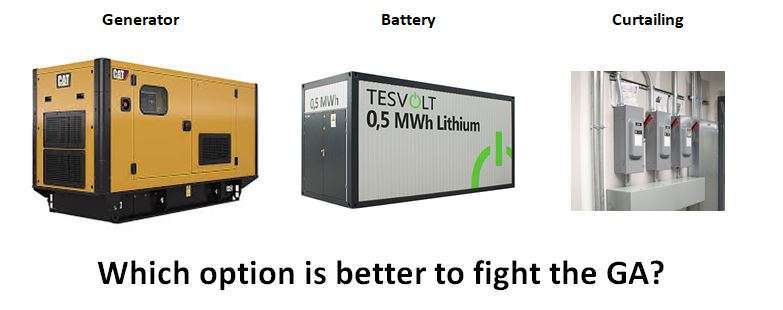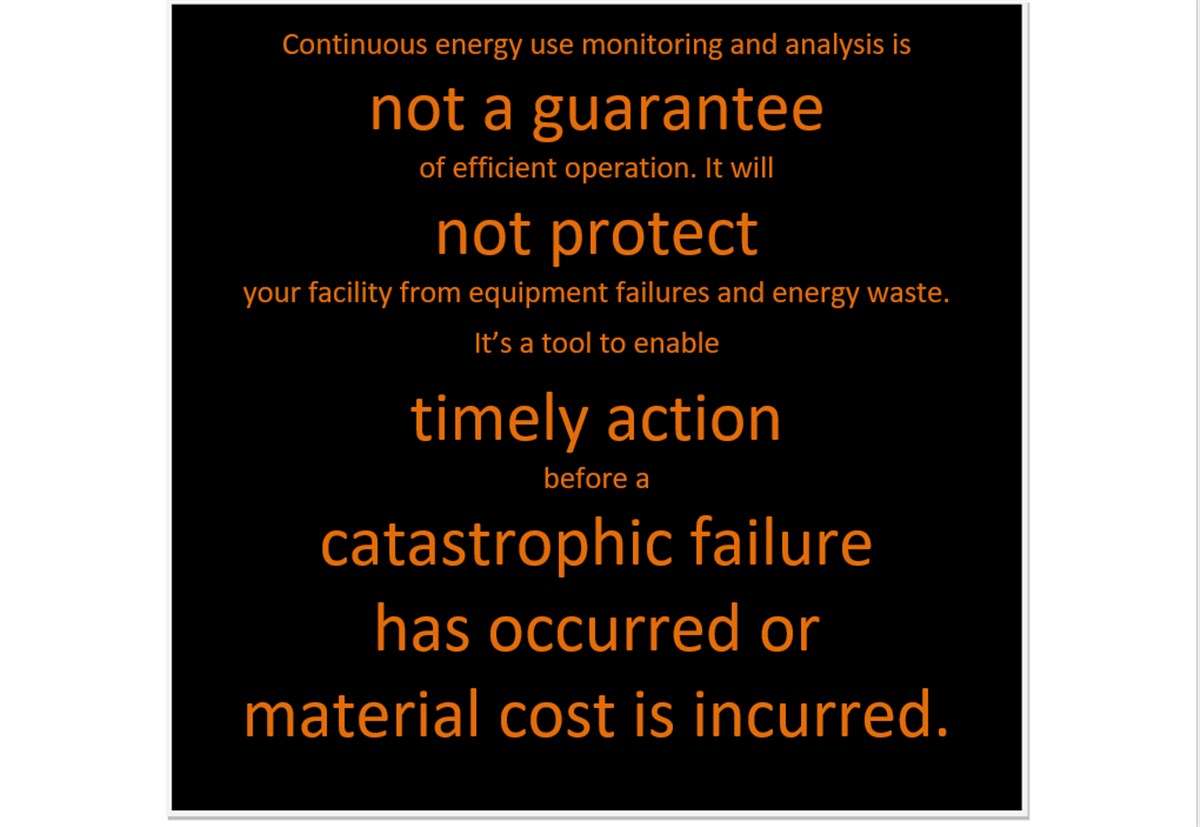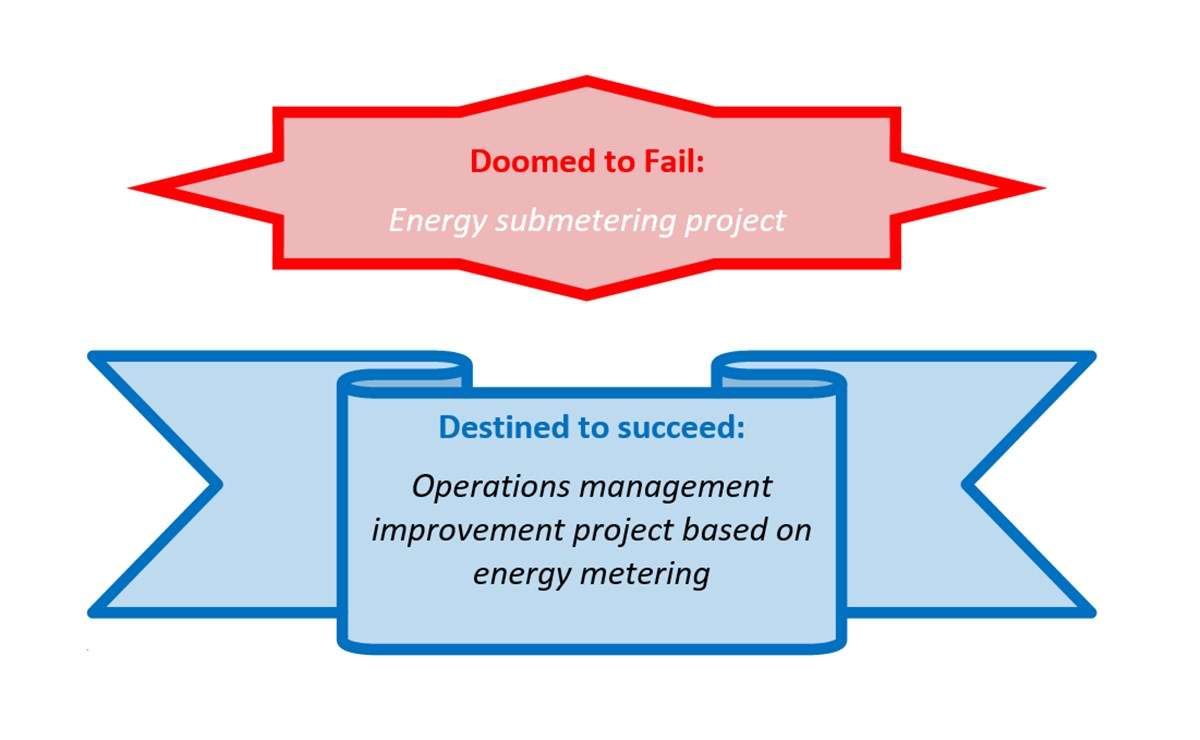What’s the best way to fight global adjustment cost? Omitting numerous details, three options are available: behind the meter generation, batteries and curtailing. Below is a quick comparison of pros, cons and risks of these solutions.
Natural gas generators – switch to own source of power during peak hours
Vendor promise
Install a behind the meter natural gas generator and decease your demand during peaks. With current GA rules for Class A, vendors forecast a 3.5 years payback period and up to 20 years of operation. Most aggressive vendors claim a ‘generation cost of 6ct/kWh’. This estimate does not include costs of asset procurement, maintenance and decommissioning. More prudent vendors claim an ‘operation cost of 10ct/kWh’; these vendors include a rough estimate of maintenance into their estimate.
Analysis
Pros:
- known technology, can be used for several hours a day, can be scaled to any demand
Cons:
- high upfront investment, significant ongoing maintenance cost, increased CO2 emission
Risks:
- Value of demand reduction during peaks through avoiding Global Adjustment charges is hard to predict, to say the least
- If GA system is changed, business case may disappear and company may end up with a stranded asset
- When prices of natural gas increase again, business case will change
How important is price of natural gas for the business case?

Prices for natural gas
At current spot prices and assuming perfect coverage of all peaks, simple payback on gas generator as GA buster is just under 4 years. Within the previous 4 years prices on natural gas varied with a factor of 3x, with current price sitting in the middle of this range.
According to gas generator vendors, 1MW generator activate during all peak saves host company about $500K per year. With growing ‘mobility’ of peaks, to reliably cover all peaks generator must operate 5h per peak. Best and most expensive software in a good year recommends curtailing 20-25 times a year. With cheaper services I believe it is reasonable to assume 50 starts per year. Total operation time then will be 250h per year. At 6ct /kWh cost of natural gas operation will be $15K. If natural gas price were to triple, then generation cost would increase by $30K per year. A noticeable increase, but still not significant compared to the $500K GA cost reduction.
Natural gas price information source.
Conclusion
To assess financial viability of using natural gas generators to reduce GA cost a prudent client should account for depreciation of the fixed upfront cost, variable maintenance cost proportional to hours of use and take their best bet on highly volatile future cost of natural gas and on future of carbon taxes.
Batteries – switch to stored grid energy during peak hours
Vendor promise
We will install batteries and switch your plant from grid to batteries for 1-2 hours at times we predict. We shall share the achieved financial savings. Should a change in global adjustment cost calculation make further cooperation infeasible, we will pack batteries and leave.
Batteries noticeably degrade with use and are slow to charge. Therefore, it’s infeasible to use them to save energy cost by catching daily high and low levels of HOEP.
Batteries are expensive, therefore, vendors aim to maintain enough batteries to support host plant for 1-2 hours only.
Analysis
Pros:
- no changes to plant operation, no additional maintenance costs to host, no upfront investment, no need to understand new technology
Cons:
- only portion of savings stays at host company;
- typically vendors offer 30% of a savings to host company with no asset ownership; higher ownership allows for higher portion of savings.
Risks: with growing number of GA avoidance game, forecast of peak hour will become more and more difficult. Software algorithms play the key role in effective forecasting.
In earlier post I elaborated a bit more on the role of mathematics in achieving best results from battery systems.
Conclusion
Battery-based solution GA cost reduction solution will work best for the companies that focus on their core business and leave GA busting game to those capable to manage associated risks. A combination with solar can make battery solution more attractive, from financial and from environmental perspective as illustrated here.
Curtailing – lower demand during peak hours
Vendor promise
Let’s analyse structure of your demand and figure out what loads can be shifted during expected peak hours.
Analysis
Pros:
- no upfront investment in hardware
- taking a closer professional look at structure of demand routinely uncovers lots of opportunities for other savings; the key word here is ‘professional’
Cons:
- scale of demand reduction is limited
- disruption to production process (delivery schedules, overtime, quality)
- requires active operational management at every peak
Risks:
- with growing number of possible peaks, cost of production disruption will grow with no guarantee of return
Conclusion
This option will suit best the companies that can afford to disrupt production process and have internal resources to implement curtaining. This is a fully flexible option with no guarantees of cost reduction. The only guarantee is that non-energy production costs will increase.
This post was comprised partly based on discussion at LinkedIn.







[…] http://www.greenq.ca/options-to-reduce-global-adjustment-for-class-a-natural-gas-generator-batterie… […]
[…] I wrote about ways to curb GA at company level here […]
[…] earlier posts I wrote about pros and cons of different GA busting technical solutions, about peak prediction services and about how peaks are not directly linked to weather […]